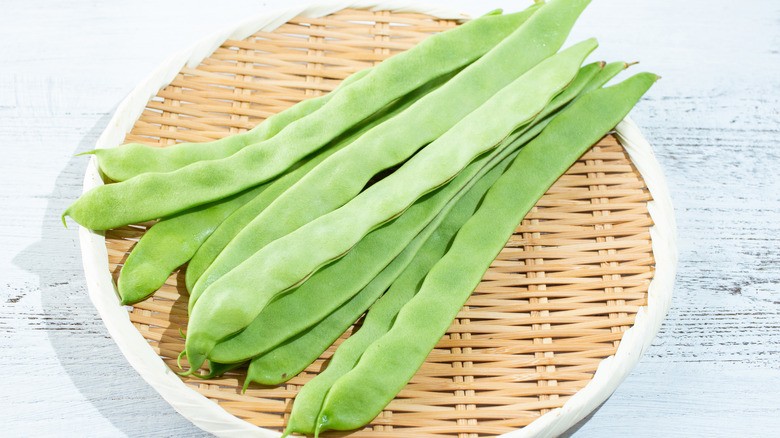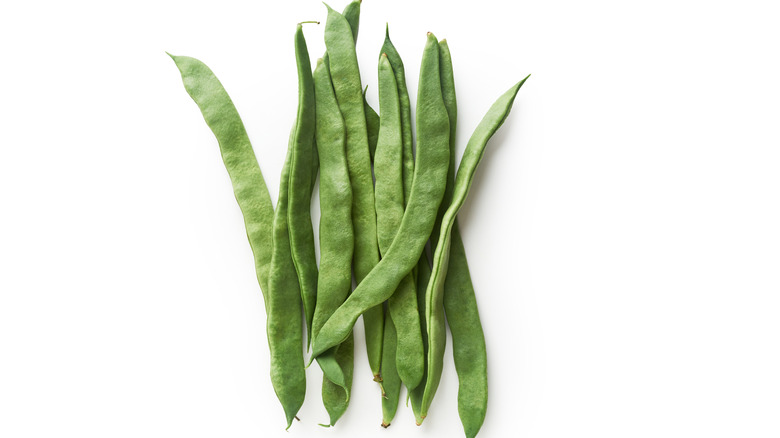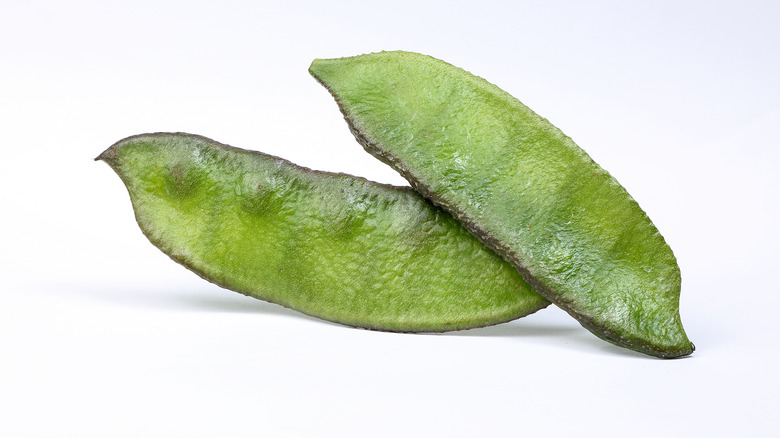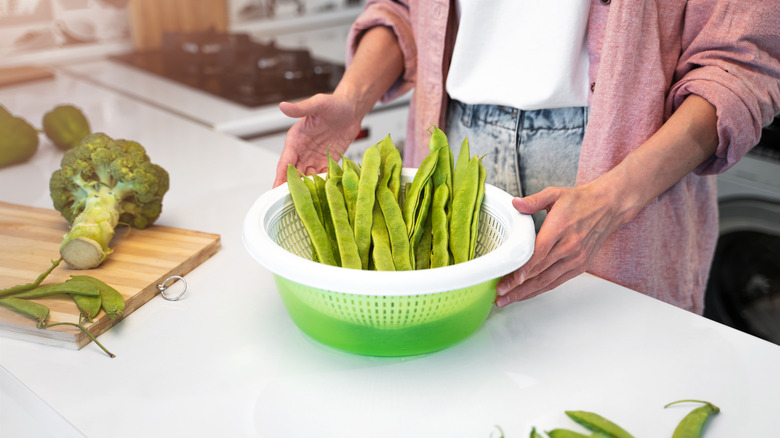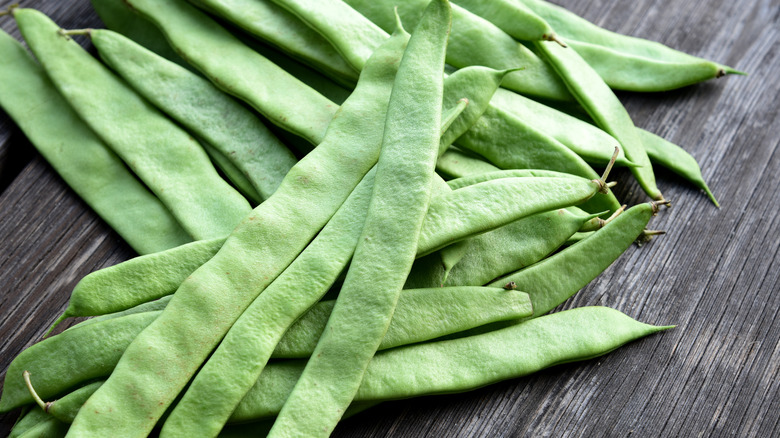What Are Romano Beans And How Are They Best Cooked?
Beans come in many shapes and sizes. From a savory, thick batch of black beans, to blistered, crunchy green beans, and nutty, sweet lima beans, it's safe to say the legume category serves up a whole lot of styles. Nearly four hundred varieties exist, so the possibilities of sampling are expansive.
If you're looking for a new variety to try out, Romano beans (Phaseolus vulgaris) are a great option. These Italian-born green beans are full of flavor with a deep, verdant color. Reminiscent of green beans but with a wider, flatter shape, they're filled with small, juicy beans. Their qualities are ideal for bright summer meals when they're in season. Best of all, they're easy to cook, melding well into a broad range of styles, from blanching to grilling, roasting, and more. So, although they may be less commonly found in grocery stores, they're worth seeking out. Let's dive into what Romano beans are all about.
What are Romano beans?
This long green vegetable — also called flat or Italian bean — is a close relative to green beans and haricot verts. Ranging from four to six inches long, they have a distinct flattened shape, which gives them a wider size than other varieties. In addition to their dark green hue, they're also found in yellow, purple, and green. Romano beans have a delicious crisp, with succulent, sweet beans on the inside. After cooking, they become more tender but do not lose their structure. There's no need to peel them; like green beans, they're best enjoyed whole.
As per their Italian bean moniker, this vegetable variety originates from the Mediterranean nation. While not as widely distributed, they're blessed with a long harvest season, stretching through the entire summer through September. So, when available, they deliver a delicious dose of green, savory vegetable goodness. Let's dive into how to cook with them.
How to cook with Romano beans
While Romano beans can be enjoyed raw, they especially shine after cooking. The beans are fit for grilling, blanching, braising, roasting, and sauteing. Feel free to substitute into any recipes with other green beans, or sugar snap peas. Regardless of the method, it's best to cook the beans with olive oil; they pair well with their savory flavor. The vegetable is especially delicious when slow-cooked in a liquid, as such a technique infuses the beans with the utilized aromatics while simultaneously making them tender. They're commonly paired with classic Italian flavors such as garlic, tomato, herbs, and even bacon. And when less crispy, their flavor and texture align deliciously with nuts, especially walnuts.
Consider also sauteeing them at high heat, which opens the door to a broad range of applications. From fruits to cheese and other sturdy green vegetables, romano beans pair well with stir-fry-like dishes. Their texture adds a delectable vegetable element and absorbs any sauce — making each bite an explosion of flavor.
Where to buy Romano beans
Romano beans may not be found as easily as other green bean varieties, but they can be spotted at farmer's markets and groceries come summertime. Organic grocers such as Whole Foods are more likely to carry them, and they're also possible to purchase online. Although it won't deliver the same fresh flavor, it's also possible to find them canned. Those fortunate enough to have a garden can also grow these beans. Seeds are planted after the temperature goes above frost, and they will already be ready to harvest in around two months.
Romano beans are fairly sturdy, but look out for any defects when purchasing. Keep in mind yellow, green, and purple are all different bean varieties and not a sign of their freshness. Once purchased, store it in the fridge for up to a week. However, for the optimal flavor, use soon after acquisition. With their delicious taste and texture, it's unlikely the vegetable will remain in storage for long anyway.
Nutritional information about Romano beans
A serving of Romano beans offers great nutritional benefits. According to Nutrionix, half a cup provides half of the daily requirement of iron, just over two-thirds the daily need of dietary fiber, and ten percent calcium. Plus, such an amount contains some nineteen grams of protein.
Iron is essential for development, which makes it especially helpful for teens, those who are pregnant, and adult women. It's vital for the creation of hemoglobin, which distributes oxygen throughout the body, and the mineral is also responsible for creating certain hormones, according to the National Institutes of Health. Meanwhile, fiber — which is one of the vegetables' more esteemed nutritional qualities — is crucial for digestion. It aids in sustaining beneficial gut bacteria, promotes weight loss, controls blood sugar levels, and prevents certain cancers, reports Healthline. And finally, while Romano beans don't have high calcium levels, they nonetheless aid in daily consumption. This mineral is essential for vital bodily functions such as bone health, nervous and circulatory systems, as well as hormone levels, per the NIH. So throw a serving of Romano beans into the next weeknight dinner. Not only delicious, they have some impactful nutritional qualities, too.
